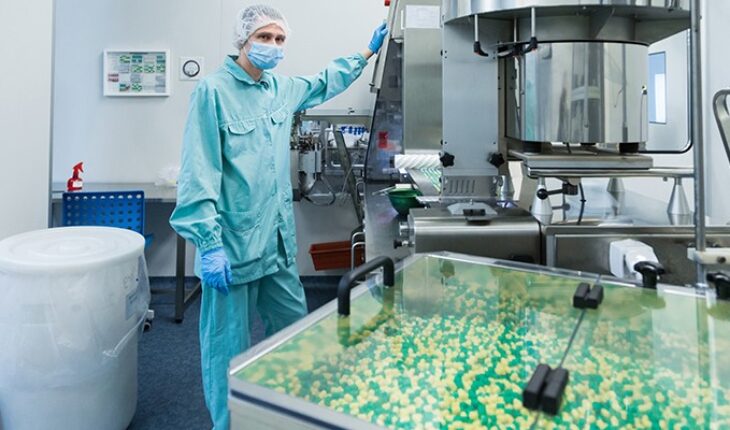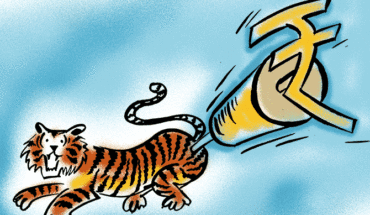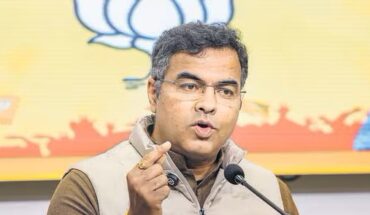A deal involving Asset Swapping by Companies is an alternative to Merger & Acquisition deal. Asset Swapping or Asset Trade by pharma companies involves exchange of assets such as product portfolio, manufacturing facilities, etc. Key drivers of an Asset Swapping deal are size and scale for companies involved in the deal in their respective strategic areas. M&A deal becomes a preferred option in the background that top pharma MNCs are cash-rich companies. A Goldman Sachs report (2023, July 6) cited that the global pharmaceutical sector had around $700 billion at its disposal. Due to deeper pockets, many pharmaceutical companies especially pharma MNCs are well-positioned to opt for M&A deals.
Widely publicized transaction was of Novartis and GSK in April 2014. Three-part transaction was completed on March 02, 2015. In that transaction, GSK had acquired Novartis’s global vaccines business (excluding influenza vaccines) for an initial cash consideration of US $5.25 billion. In that transaction, Novartis bought oncology portfolio from GSK as GSK divested its Oncology business for cash consideration of US $16 billion.
“Who” aspect requires careful consideration as it can become a hurdle too as competitors have to come together. Continuing with earlier example, the transaction between Novartis and GSK is an interesting example of Co-opetition or Coopetition, a business strategy coined to describe cooperative competition, (popularized by Adam N. Brandenburger and Barry J. Nalebuff in their book with title – ‘Co-Opetition’) too as both companies came together by forming a joint venture (JV) to create an US $11 bn-a-year non-prescription Consumer Healthcare (CHC) business too. Novartis and GSK were leading players and remain formidable players in biopharmaceutical business. In newly created Consumer Healthcare Joint Venture (JV), GSK held majority stake of 63.5 per cent. Four out of eleven Joint Venture Board used to be appointed by Novartis.
On March 27, 2018, GSK announced the agreement with Novartis to buyout Novartis’ 36.5 per cent stake in the CHC JV for $13 billion (£9.2 billion). In 2017, CHC business of GSK had sales of £7.8 billion. From 2015 onwards, sales grew 4.0 per cent on a three-year CAGR basis. Operating margins also went up from 11.3 per cent in 2015 to 17.7 per cent in 2017. Under the terms & conditions of transaction in 2014, GSK had the right to purchase Novartis’ stake or part of it in the Joint Venture anytime between March 2, 2018, to March 2, 2035. Novartis considered minority stake as a non-core asset, and the stake sale enabled the company to focus on the development and growth of its core businesses.
Swap transactions are also difficult to execute. Prior to the deal with GSK, Novartis AG was in discussion for swapping its animal health and human vaccines business against Over-the-Counter products unit of Merck & Co. Inc. But it did not work out. Hard to execute, difficulty in comparing the relative attraction of different businesses were cited as reasons cited behind failure. Finally, Eli Lilly & Company acquired Novartis Animal Health on April 22, 2014, in an all-cash transaction of $5.4 billion. Eli Lilly had decided to invest in Animal Health in 2007, and by the end of 2013, the company had a portfolio of 600 products with the presence in about 40 countries.
“Why” aspect of Asset Swapping provides interesting insights. Companies involved in the transaction can manage this transaction and are not required to approach capital markets or Private Equity firms. In GSK-Novartis transaction, GSK had announced on March 2, 2015, its plan to use the transaction proceeds to fund ‘capital return’ of £4 billion to its shareholders. The transaction also strengthened GSK in Pharmaceuticals, Vaccines, and Consumer Healthcare. The transaction enabled Novartis to focus on growing segments of innovative pharmaceuticals, eye care and generics. In addition to this, Oncology portfolio of GSK and two pipeline compounds were expected to strengthen Novartis’ position in targeted therapies and small molecules.
Boehringer Ingelheim and Sanofi had a similar transaction in June 2016 in which both companies agreed for swap of businesses. This deal was the second largest asset swap deal after the GSK-Novartis deal of 2014. Exclusive negotiations were initiated in December 2015. Consumer Healthcare business of Boehringer Ingelheim was exchanged with Animal Health Business (Merial) and the transaction was closed on January 1, 2017. Through this transaction, Sanofi built a strong and innovative CHC Global Business Unit. Skilled CHC team of Boehringer Ingelheim (BI) and well-established products of BI also strengthened Sanofi’s position in core strategic categories in CHC market. Identification of assets which are identical in terms of value is a complex issue, e.g., Merial, Animal Health Arm of Sanofi was valued at €11.4 bn, and CHC business of Boehringer was valued at €6.7 bn. Hence, Boehringer had to pay Sanofi €4.7 bn in cash to make the difference.
Gains accrue as respective pharmaceutical companies can build their strength and at the same time, those companies can avoid drawbacks of large-scale merger and acquisitions. Asset swapping also helps respective companies to divest part of their portfolio. This offers an opportunity for those pharmaceutical companies which had large global business and had presence in several geographies, and therapeutic categories. The combined strength improves competitiveness in respective business segments.
Pharma MNCs operate in various countries so market-specific challenges are also present in such deals. Three companies namely Novartis, GSK and Eli Lilly had subsidiaries in India. For FY2012-13, Novartis had a revenue of just Rs. 903.36 Crore. Novartis operated in India through four subsidiaries namely Novartis India, Novartis Healthcare, Sandoz, and Chiron-Behring Vaccine Private Limited. GSK operated in India through two subsidiaries namely GlaxoSmithKline Pharmaceuticals and GlaxoSmithKline Consumer Healthcare. GSK Pharma and GSK CHC had a revenue of Rs. 2,546.15 Crore for the year ending December 31, 2013, and Rs. 3,187.70 Crore for the year ending December 31, 2012, respectively. In contrast to these companies, Elil Lilly was very small in India at that point of time.
Second major difference in these companies was regarding their presence in different therapeutic categories. GSK India was mainly an acute therapy company, which was known primarily for cough and cold medicines. Novartis had products in acute therapy, but it had certain offerings in chronic therapy as well.
In each market, pharma MNCs must deal with anti-trust regulators. For example, the Competition Commission of India (CCI) approved the deal between GSK Plc. And Novartis. While clearing the deal, the CCI observed that it did not find the transaction to be anti-competitive in India. In different markets, anti-trust regulators have to see that any combination is likely or not likely to have appreciable adverse effect on competition. In Indian context, the CCI had observed that the presence of GSK and Novartis was negligible in Vaccines. There was presence of significant competitors in Vaccines. Similarly, the CCI approved Sanofi-Boehringer asset swap in September 2016.
The Ministry of Corporate Affairs, Government of India has prescribed threshold values for M&A and Asset Swap as a combination which needs approval of the Competition Commission of India (CCI). These threshold values are based on the “value of assets” and “turnover” of the parties to the combination. Further, these are “enterprise-level threshold” and “group-level threshold” to which the target would belong after the M&A deal. From March 7, 2024, onwards, threshold limits are – the value of assets within India at the enterprise level exceeds Rs. 2,500 Crore or turnover at the enterprise level exceeds Rs. 7,500 Crore (at group level, value of assets exceeding Rs. 10,000 Crore or turnover exceeding Rs. 30,000 Crore respectively). If at enterprise level, the enterprise has assets or turnover in India as well as outside India then threshold limit of assets is more than US $1.25 bn with at least Rs. 1,250 Crore worth assets in India (at Group Level, assets exceeding US $5 bn with at least Rs. 1,250 Crore in India) or at the enterprise level, turnover is more than US $3.75 bn with at least Rs. 3,750 Crore turnover in India (at Group Level, threshold limit is turnover of US $15 bn with at least Rs. 3,750 Crore turnover in India).
A recent issue of European Pharmaceutical Manufacturer (2025, January 3) while listing top 4 trends shaping life sciences operations in 2025 highlighted that pharmaceutical companies are embracing incremental growth strategies and listed ‘asset swaps’ along with M&A deals as part of these incremental growth strategies to deal with geo-political risks. In view of this, asset swapping is likely to find takers in future.
Dr. Anil Kumar Angrish-Associate Professor (Finance and Accounting),Department of Pharmaceutical Management,NIPER S.A.S. Nagar (Mohali), Punjab
Disclaimer: Views are personal and do not represent the views of the Institute.





